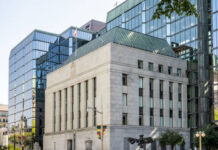The ECB remained on hold yesterday, while the statement accompanying the decision contained no major changes from previously. The Bank kept intact its dovish forward guidance that the QE program can be extended or expanded if needed, and that rates will remain at present or lower levels for an extended period of time.
Draghi’s press conference was more eventful. The euro gained initially, after the President indicated that even though the risks surrounding the outlook for growth are still tilted to the downside, they are moving closer to being broadly balanced. However, the currency quickly gave back all its gains to trade even lower, after he said the Governing Council did not discuss any strategy for exiting stimulus. He added that policymakers are still not sufficiently confident that inflation will converge back to their target. In our view, these signals call into question the recent media reports that the Bank is likely to sound more optimistic at upcoming meetings, perhaps as early as in June. Even though something like that will probably depend on how the data evolve until then, it would be rather odd for the ECB to communicate a completely different message in six weeks’ time, in our view.
For the time being, investors are likely to turn their attention back to incoming economic data in order to assess whether the Bank will indeed shift towards a more upbeat bias in June. Eurozone’s preliminary CPI data for April, due to be released today, could provide a first hint on this prospect (see below).
EUR/USD edged down as soon as Draghi poured cold water on speculation with regards to a more optimistic bias. The pair slid after it found resistance above 1.0915 (R1) to hit our support level of 1.0855 (S1). We still believe that the short-term path is to the upside and that buyers may take advantage of yesterday’s setback and aim for another test near the 1.0915 (R1) barrier. A clear break above that resistance could target the next one at 1.0955 (R2), marked by Tuesday’s and Wednesday’s highs. A potential rise in Eurozone’s CPI rates combined with the likelihood of a slowdown in US GDP could prove the catalyst for such a move today.
Riksbank keeps rates unchanged, extends QE duration
The Riksbank kept its key policy rate unchanged yesterday, but extended the duration of its QE program by 6 months to December 2017. It also pushed somewhat further out the timing for its first planned rate hike, and maintained an ultra-dovish tone in the statement accompanying the decision. SEK tumbled on the news and could remain under selling pressure for a while.
Today’s highlights:
As we already noted, we get Eurozone’s preliminary CPI data for April. The forecast is for both the headline and the core rates to have risen. The ECB has repeatedly noted that it places more emphasis on the core rate, where a potential increase today could amplify speculation that the Bank may appear more optimistic in coming months. This could help the euro to recover some of its ECB-related losses.
From Germany, Sweden, and Norway, we get retail sales figures, all for March.
From the UK, we get the 1st estimate of Q1 GDP. The forecast is for economic activity to have slowed, something supported by the notable slide in retail sales for March, the disappointing industrial production for January and February, and the weaker performance of the nation’s PMIs compared to that seen at the turn of the year. A potential slowdown in GDP could confirm that the BoE will likely keep its accommodative policy stance intact in order to support growth and thereby, reverse some of the pound’s recent gains.
EUR/GBP also traded south on Draghi’s remarks, falling below the support (now turned into resistance) of 0.8450 (R1) to stop near 0.8410 (S1). Given that the rate is trading below the long-term uptrend line taken from the lows of November 2015, we consider the outlook to be cautiously negative. However, accelerating Eurozone CPIs combined with slowing UK GDP could cause a corrective bounce before the bears decide to take the reins again. A break back above 0.8450 (R1) may confirm that and could open the way for the next resistance of 0.8500 (R2).
We get the 1st estimate of Q1 GDP from the US as well. The forecast is for GDP growth to have slowed to +1.1% qoq SAAR from +2.1% qoq SAAR in Q4. Bearing in mind that the Atlanta Fed GDPNow model suggests that growth was a mere +0.2% qoq SAAR, we see the risks surrounding that forecast as tilted to the downside. Coming on top of the slowdown in the nation’s CPIs for March, a weak Q1 growth rate could push back expectations regarding the timing of the next Fed rate hike, which may weigh on USD.
We have only one speaker on the agenda: SNB Chairman Thomas Jordan.
EUR/USD

Support: 1.0855 (S1), 1.0825 (S2), 1.0800 (S3)
Resistance: 1.0915 (R1), 1.0955 (R2), 1.1000 (R3)
EUR/GBP

Support: 0.8410 (S1), 0.8345 (S2), 0.8315 (S3)
Resistance: 0.8450 (R1), 0.8500 (R2), 0.8530 (R3)












